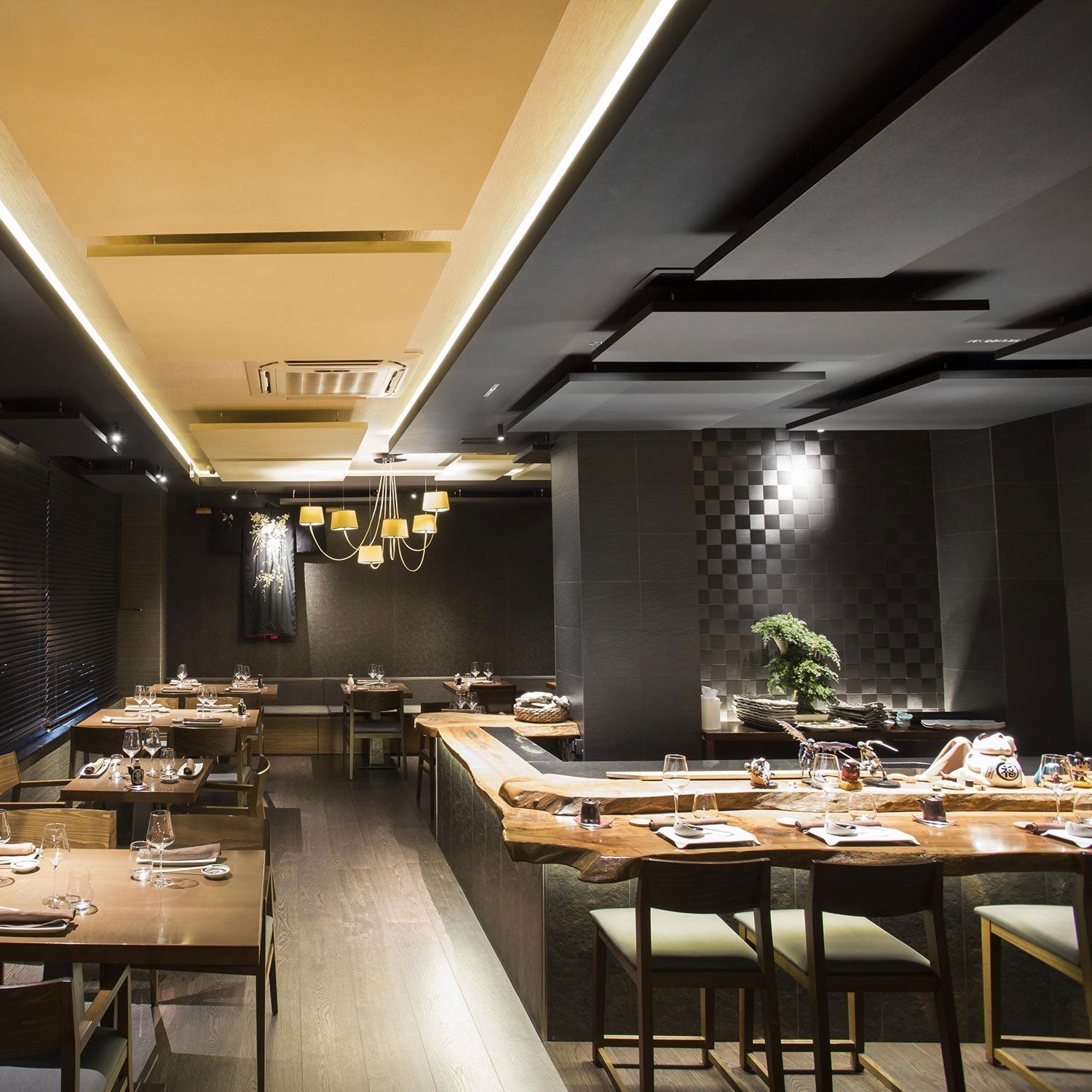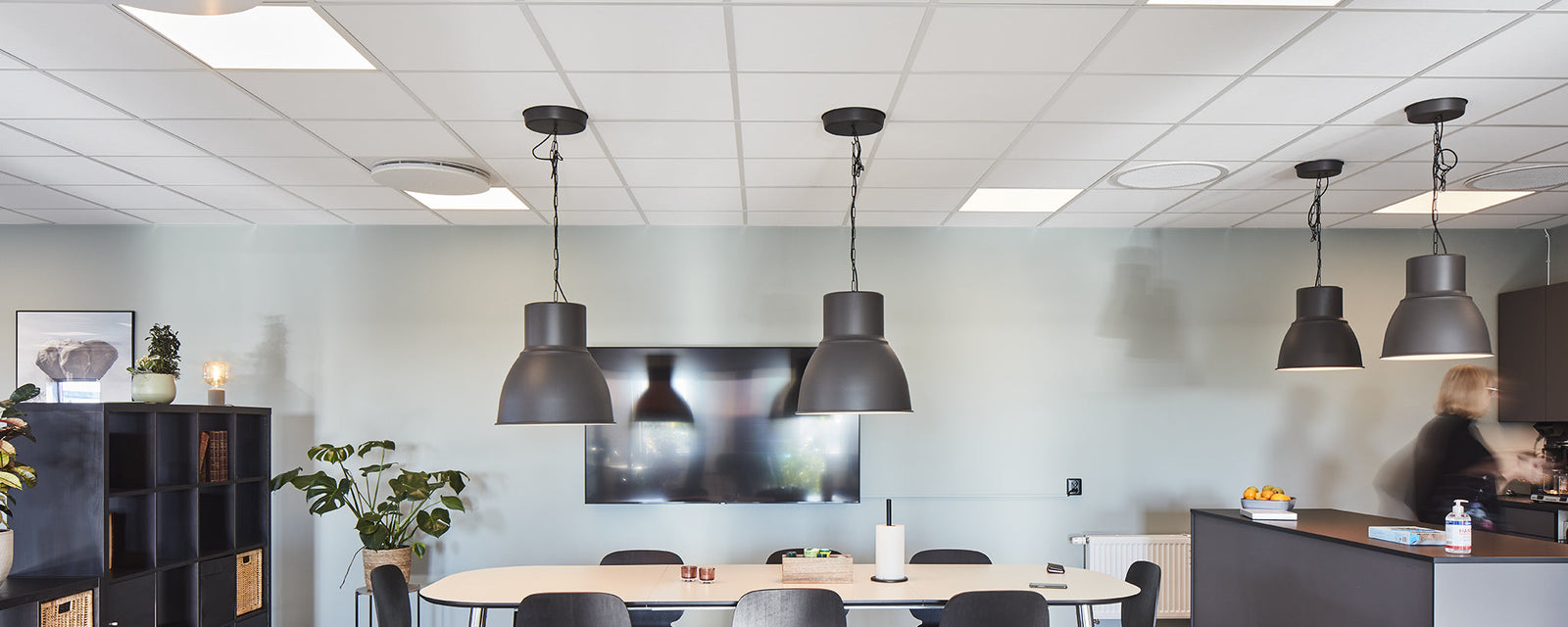Reverberation can make it difficult to get the most of your space, whether it’s big or small, public or private. Here we look at the causes, the impact, and what you can do to reduce it.
What causes reverberation in a room?
First let's cover some basic acoustics. When a sound is made in a room it travels outwards in all directions. As soon as it hits a hard surface such as a wall, floor or ceiling, it bounces straight back off, the sound then passes back and forth between the surfaces, creating reverberation. This sounds similar to an echo, but shorter.
Because sound travels so quickly, you probably won't be able to hear the original sound and the reverberation separately, instead, you'll hear one prolonged sound.
After the sound is produced, it gradually loses energy and decays. The longer it takes to decay; the more reverberation you'll hear. Decay is measured in seconds, and we look at how long it takes for the sound to decrease by 60 decibels, or to a millionth of its original intensity (this measurement is known as RT6).
The amount of time a sound takes to decay varies a lot between different environments. For example, reverberation time (RT) could be 3-4 seconds in a classroom with lots of bare walls, or less than one second in a living room with soft surfaces like sofas and curtains. This is because the bare walls reflect the sound, while the soft materials absorb it.
Why is reverberation a problem?
Every room has some reverberation, and rooms with very low RT can sound unnatural or 'dead'. But high RT can cause big problems in spaces where speakers need to be heard clearly, whether it's a classroom, boardroom or restaurant.
This is because high RT makes speech less intelligible. The reverberation competes with the original sounds you produce, making it difficult to concentrate on what's being said. This is stressful for both speakers and listeners and can turn even the simplest conversations into an ordeal.
It's especially important to get RT right in open spaces with multiple activities taking place at the same time. In environments like open plan offices, classrooms and community spaces, noise from one area can interfere with what's going on elsewhere unless the sound is properly managed.
For this reason, the government's acoustic standards for schools recommends RT of under 0.6 seconds for new build classrooms. For offices, RT under 0.8 seconds is normally comfortable, but it very much depends on the room.
How to stop reverberation in a room
The best solution is to absorb the unwanted sound, soft furnishings can make a difference but can only go so far. In spaces that don't have lots of soft, absorbent surfaces, acoustic panels are ideal. They reduce noise by increasing the amount of sound absorbing material within the room, which lowers RT by stopping the sound bouncing back and forth. Ultimately, this makes the room's acoustics feel a lot more comfortable.
The performance of each panel is measured in equivalent absorption area (Aeq) per unit. Essentially, the higher the Aeq of the panel at a particular frequency, the more impact it will have. In this case, size really does matter. The larger or more panels in the room, the more absorbent the surface, and the more impact it will have.
We offer two options when it comes to our panels, both made of the same wool-glass material, but designed specifically for different scenarios, Akusto One™; wall panels perfect for smaller rooms, home offices and cafés dedicated to more precise absorption. Solo™; these large panels are suspended from the ceiling directly above high volume areas great for larger rooms such as conference rooms, classrooms and more open plan restaurants.
If you'd like to know more about the performance of the panels follow the links below:
Akusto One™ , Solo™ Circle and Solo™ Square
Unsure on which solution is right for you (ceiling or wall) take a look at our blog post to help you decide.
Take a look at the impact our acoustic panels had on a leading architect’sreception area:
Explore our shop to find the right panels for you. See our installation guides and videos for how to install your panels, or get in touch if you have any questions.



